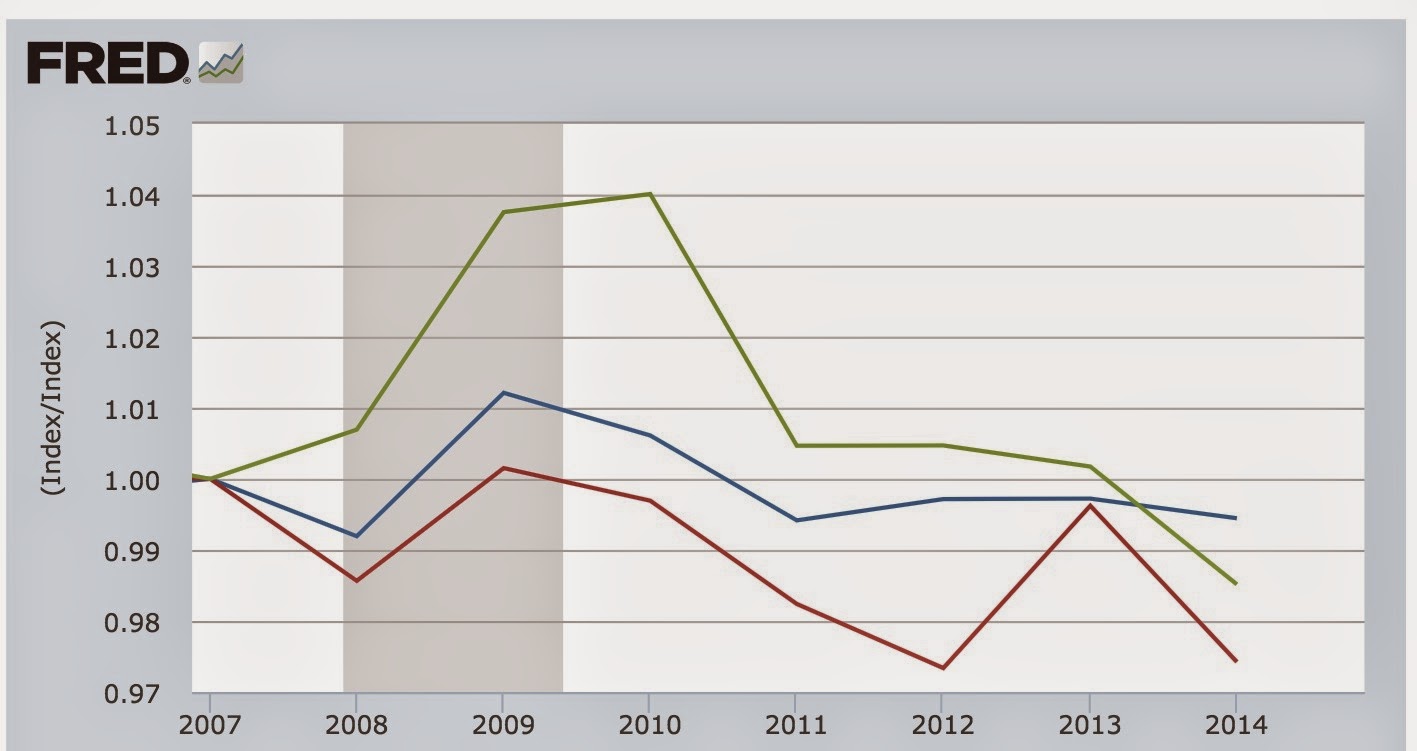- by New Deal democrat
This is a continuation of my examination of the impact of wages in goods-producing vs. services jobs. On Monday I wrote that real GDP growth in the last 30 years correlates well with the amount of growth (or shrinkage) in goods-producing jobs.
Before I turn to a longer historical examination, I wanted to point out something even more fundamental: wage stagnation since the turn of the Millennium has been a story of manufacturing jobs. The service economy has seen considerably more growth in real wages.
Let's start with an overview. Here's a graph of (nominal, not inflation-adjusted) wages in goods-producing (red) vs. services jobs (blue) for the last 50 years:
Note that goods-producing jobs have paid slightly more, on average, throughout that period. Further note that goods-producing jobs increased faster than wages in service jobs in the 1970s, but the gap has narrowed since 2000.
Now let's take a look at real wages for those same categories. Again, goods-producing jobs are red, services blue. Real wages are normed to 100 as of December 2014:
Now we see a
HUGE difference, and an important story.
In the 1970s, unions were still strong, and were primarily in goods-producing industries. Workers in goods-producing industries were able to maintain their high real wages. Meanwhile, real wages in services jobs declined dramatically, probably also impacted by a disproportionate entry of women into those fields. With the assault on unions beginning in the 1980s, and flight of manufacturing to Latin America during that decade, wages in goods-producing jobs fell precipitously, while the decline in pay in services jobs was slight. By the end of 2014, real wages in services jobs were near record highs only eclipsed by 1972 and 1973. By contrast, real wages in goods-producing jobs are languishing below their level of the entire 1970s and half of the 1980s, are no higher than they were over a decade ago, and have even
declined during this recovery!
Further, measured since their 1995 lows, real wages in services jobs have risen at
more than double the rate of their rise in goods-producing jobs:
Manufacturing jobs have taken the brunt of offshoring and automation. While no job category is at all time high real wages, services jobs are getting close. The story of wage stagnation over the last 15 years has been primarily one of goods-producing jobs.
UPDATE: Just to be clear, I don't want to oversell the improvement in real wages in service jobs in the last 20 years. Here's the improvement in real wages in service jobs since the inception of the series in 1964 through their all-time high at the beginning of 1973:
Real wages for service jobs grew by nearly 14% in that 9 year period (between 1.4% to 1.5% annually) vs. over 18% in the last 20 years (between 0.8% and 0.9% annually). In other words, real wage growth in services jobs has been growing at only about 2/3 its rate during the halcyon 1960s and early 1970s.






















